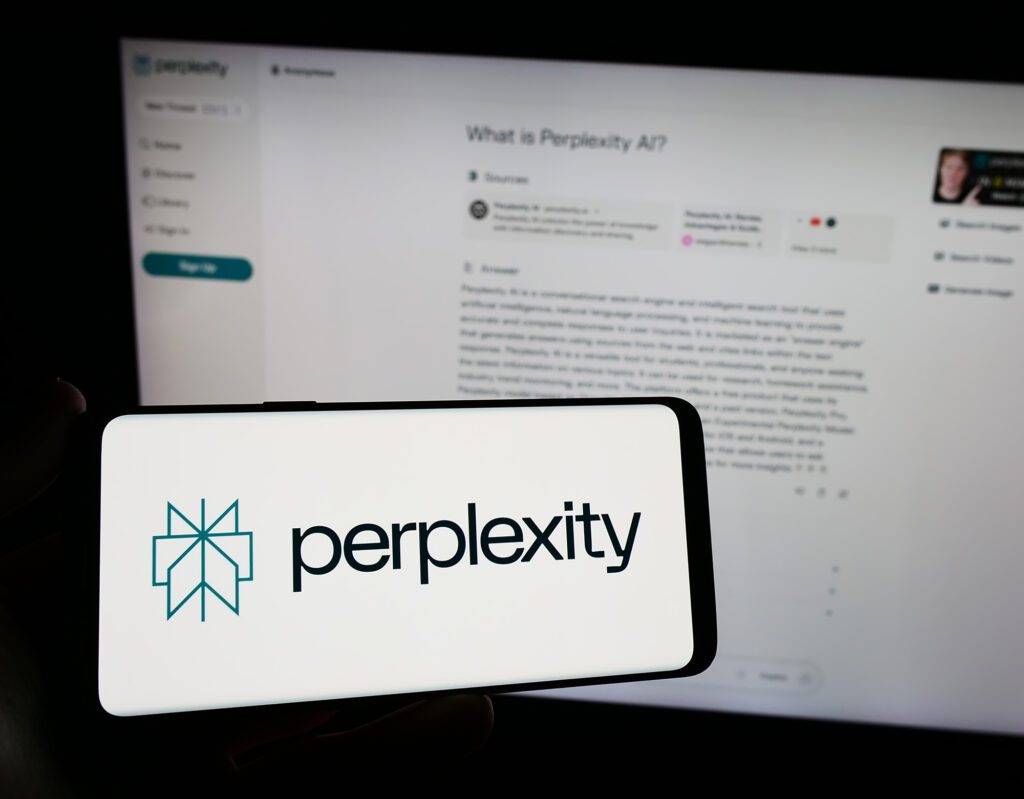Around 15 years ago, Taz Patel was slinging pop-under ads at Interclick before it was acquired by Yahoo.
Now he’s head of advertising at Perplexity, the generative AI startup – valued at $9 billion – that’s angling to disrupt the search engine market and drink Google’s milkshake.
It’s a very different vibe.
“The thesis is that we can do a better job of surfacing advertising in a way that is truly incorporated into the user flow versus it being a distraction,” said Patel, speaking at the Marketecture Live event in New York City on Monday.
Patel joined Perplexity in December, just a few weeks after the company began experimenting with ads on its platform. But Perplexity is taking a slowly-but-surely approach to its new ads business.
As of now, it’s only working with “less than a dozen” advertisers, Patel said, although a “second cohort of advertisers [is] coming on board pretty soon.”
Chat-vertising
Today, advertising on Perplexity is still in what Patel calls the “product stage.”
The advertising team is small and lean, he said, and “we’re just trying to test everything before we get out there.” The top priority is not to mess with a user’s search experience. People don’t query an LLM to see ads; they’re looking for answers to their questions.
Although Perplexity is in the search business, it considers its service to be more about “answer engine optimization” than “search engine optimization.”
In other words, giving people the information they seek and only incorporating advertising if it’s additive to that pursuit.
Presently, Perplexity’s primary ad format is a sponsored query that appears after someone prompts the chat interface with a question. The response they see “is not augmented or influenced in any way” by advertising, Patel said.
But when users scroll to the bottom of the page – and this is true for every search, regardless of whether it’s been sponsored – they’re also shown a list of related AI-generated follow-up questions and answers under the heading “People also ask.” The first of these is sometimes set aside for a sponsored slot.
For example, a search for “What is the best ice cream?” on Perplexity generates this sponsored follow-up question: “Does Whole Foods Market carry freshly made desserts, cookies, and sweets?” The answer, which outlines the dessert offerings at Whole Foods, is pulled from Reddit. (Click here to read the whole thing if you’re curious.)
“Relevancy is the most important factor to surface that ad,” Patel said. “The ad modalities might change, the UI might change, but how we think about ads – it’s not about bids or budgets or pricing or things like that, and I think the consumer also wants that.”
Search and ye shall shop
But it’s still very much about bids and budgets and “things like that” for a lot of advertisers.
Perplexity gets a lot of inbound interest from the CMOs of large brands looking to shift their budges to new channels, Patel said, but they often find it hard to shake their traditional search mindset.
They “want to take what they do, maybe on traditional search platforms, and dump it into Perplexity with keywords and blocklists,” Patel said. “But it doesn’t work that way.”
For instance, rather than a cost-per-click model, which is how most search advertising is priced, Perplexity charges on a CPM basis because it’s more focused on driving awareness than sales, at least for now.
But awareness and sales are all part of the same funnel, and Perplexity is already working on ways to integrate commerce into the research experience.
Do a search for “Where can I get an affordable mattress?” on Perplexity today and you’ll see shoppable ads for Bob’s Discount Furniture, Sleepy’s, Mattress Firm and Walmart.
In November, Perplexity introduced a merchant program that allows retailers to share their product specs so the platform can pull in live, accurate details in response to queries about pricing, shipping and other product details.
And Perplexity already has credit card and shipping address information for its Pro users, so it doesn’t have to ask for that information at checkout.
“When I first started [four months ago], the focus was ads out of the gate, and now shopping rolls into that as well, both organic and paid,” Patel said. “When you’re in the mindset of asking a question and looking for the answer – and potentially moving down the funnel – it’s an opportunity for us to provide utility to the user.”
Guess the next step in human evolution is buying mattresses and ice cream through an AI-powered search engine.













